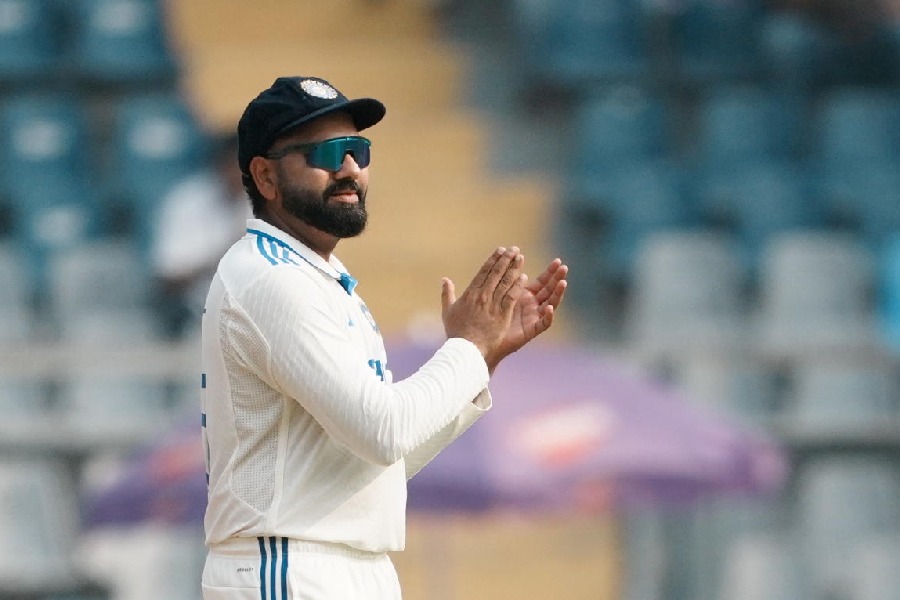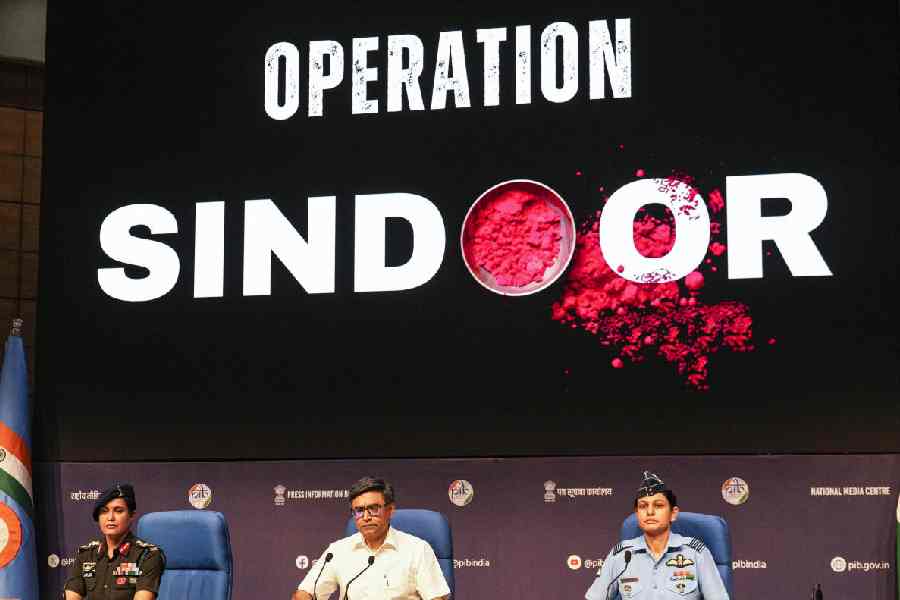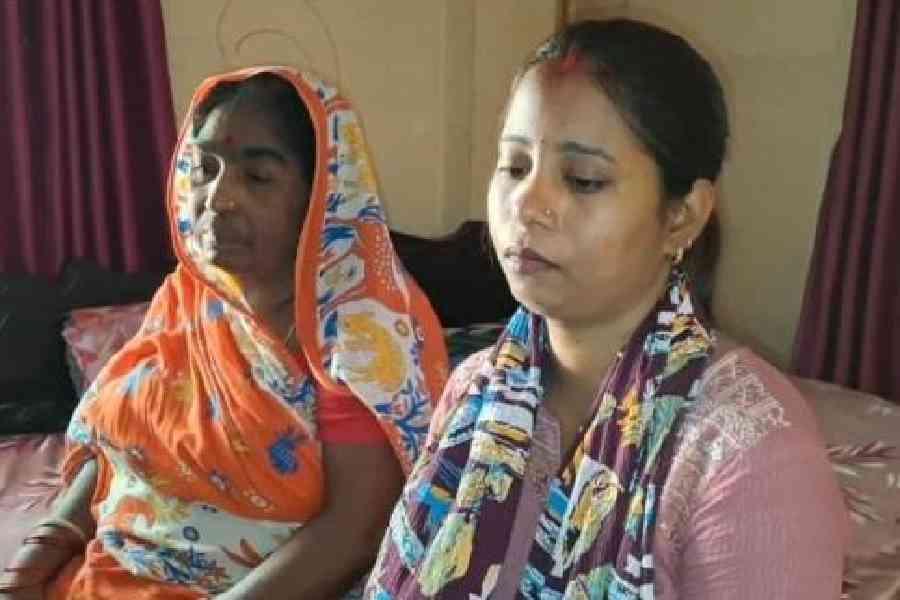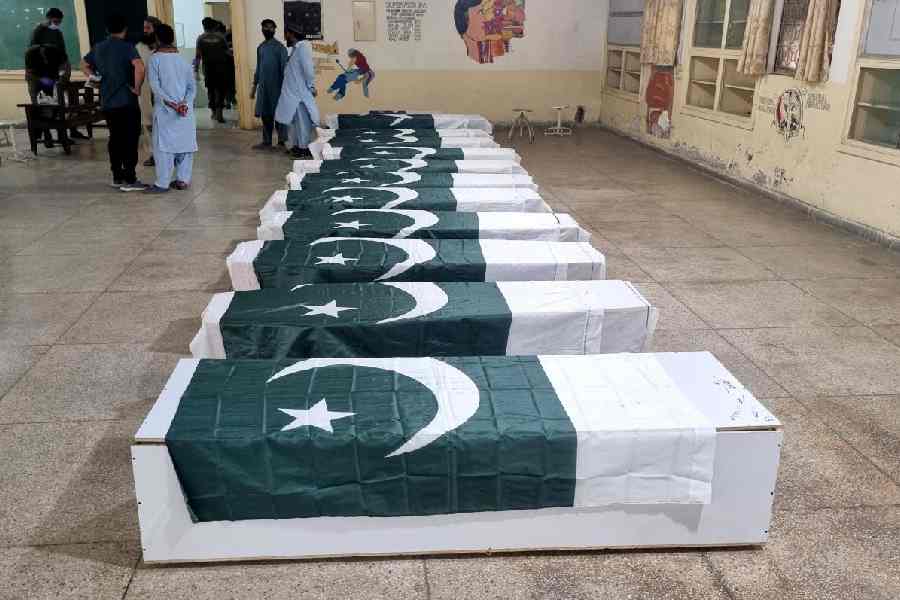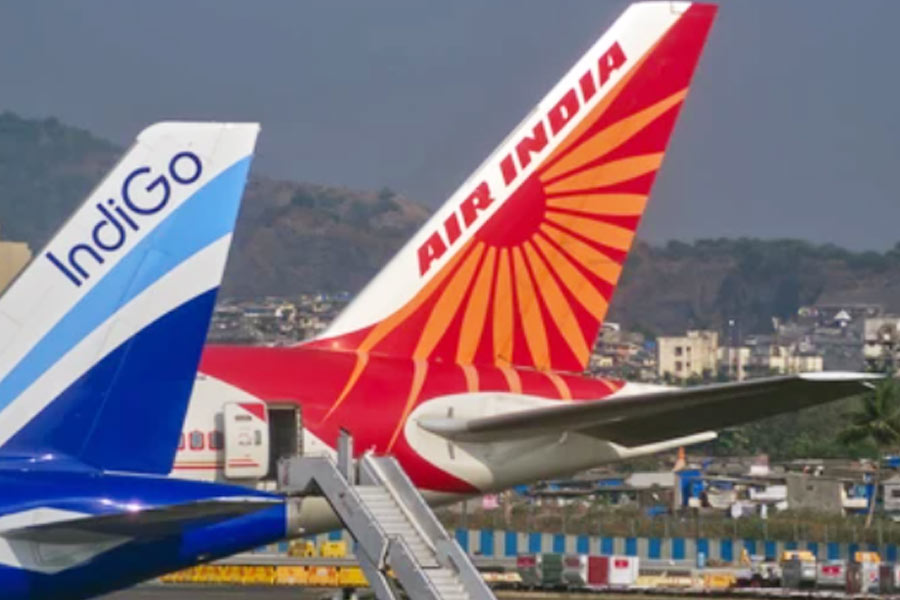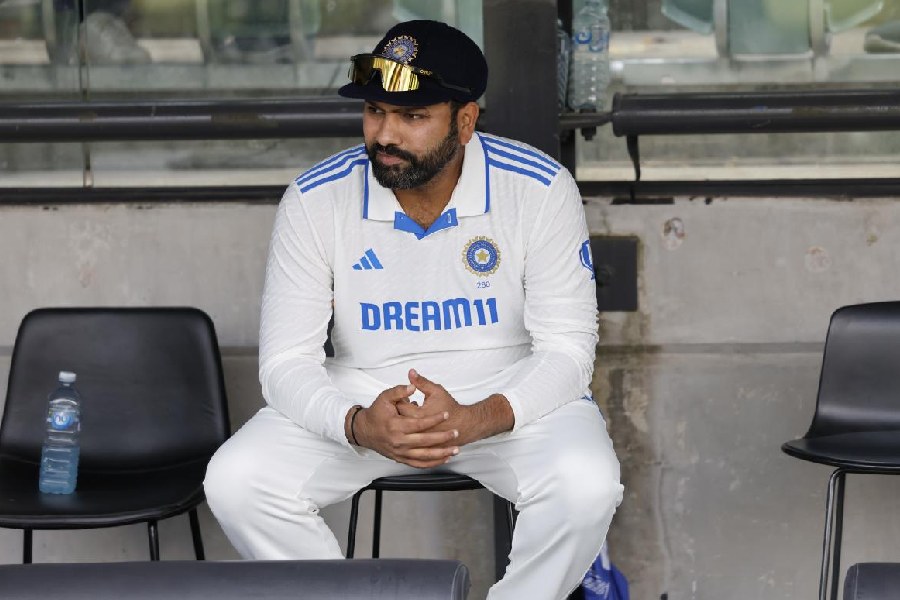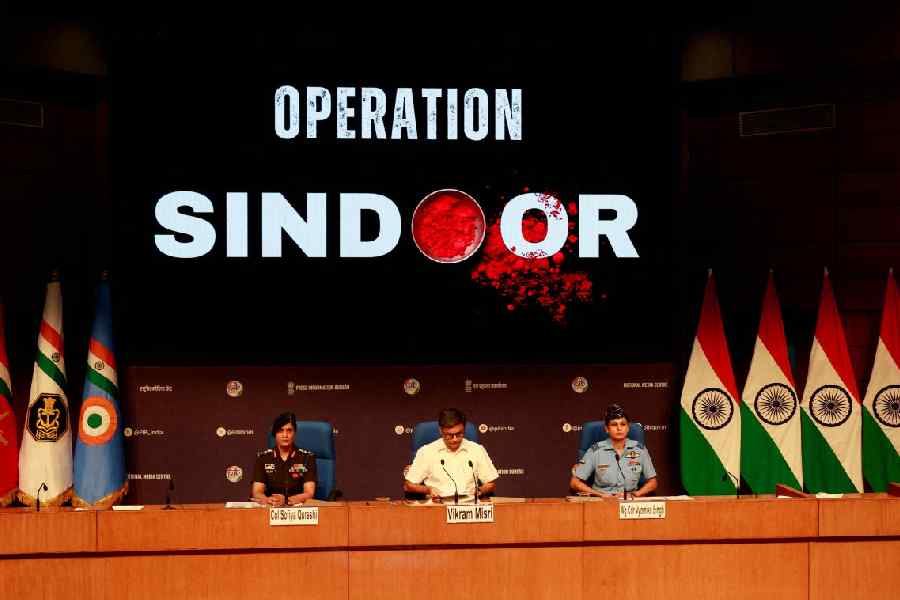 |  |
| A girl carries a photograph of her father who was killed during the shootings in Chhattisgarh; (right) villager Ramaiah with a photograph of his 12-year-old daughter Saraswathi who was killed in the same gun battle. (AFP) | |
New Delhi, July 8: The Union ministry of home affairs is back to the drawing board on its counter-Maoist strategy, consulting military experts and comparing experiences since the June 28-29 shooting in Chhattisgarh in which an estimated 22 villagers were killed.
In one of a series of meetings, a senior officer from the Army Headquarters gave blunt advice to Union home secretary R.K. Singh: “Get your IPS officers to command battalions and lead from the front instead of making them babus behind desks.”
On the intervening night of June 28 and 29, 22 tribals, said to be unarmed, were killed in two separate attacks by the Central Reserve Police Force in south Chhattisgarh.
A total of 17 were killed in Sakerguda, 3km from a CRPF camp at Basaguda. Of those killed, 12 were under 16 years of age and two were 12-year-olds. Chhattisgarh chief minister Raman Singh alleged they were used as “human shields” by the Maoists and Union home minister P. Chidambaram has said he was “deeply sorry if innocents” had been killed.
In the Indian Army, that is involved in training central and state police forces for counter-Maoist operations, there is the feeling that the CRPF and the central police organisations are not suitably trained and lack leadership skills at the tactical level.
The Army Headquarters has also advised the home ministry that the CRPF should change from the company and platoon-level deployment to battalion-level deployment. This advice was given after a ministry of home affairs official told a military adviser that the CRPF had adopted the army’s Kashmir model of “grid deployment”.
The army’s advice was also reflected in a paper presented by a former army officer, Brigadier (retired) Rumel Dahiya, now adviser (net assessment and defence studies) at the Institute of Defence Studies and Analysis.
In a paper presented at the army-backed think-tank Centre For Land Warfare Studies (CLAWS), Brig. Dahiya wrote: “Presently the CRPF is employed in company and platoon lots and often attached to police stations or to the district police. There is no specific area of operations assigned to CRPF battalions under the command of their commanding officer. Companies are often commanded by inspectors in their 50s who neither have the energy and stamina nor motivation to fight an invisible opponent with thorough knowledge of terrain and enjoying local support.”
The senior officer from the Army Headquarters, who was advising the home ministry, was surprised to learn that no IPS officer is commandant of a battalion of the CRPF. IPS officers join the force only at the level of deputy inspector-general and upwards. Commandants are junior and are drawn from the CRPF’s own cadre.
The officer said this was contrary to the practice in the army in which lieutenants, captains and majors command sections, platoons and companies before rising to command battalions as lieutenant colonel or colonel.
This means that the men they command know that their commanding officer is worthy of leading by example.
In fact, even as the counter-Maoist operations have led to a greater interaction between the military and the police, the differences between the two types of forces have become even starker. A military adviser from the Army Headquarters has been attached to the home ministry for the past four years.
Not only the army, but also the air force has been complaining that the central and state police organisations are not following standard operating procedures or routing their requests through the right channels. Although the army is not directly involved in the counter-Maoist operations, it has two battalions deployed in south Chhattisgarh for more than a year for training.
But the Chhattisgarh government has not yet given the army maps for it to move into the “manoeuvre range” allocated to the army in the Marh region. The vice-chief of army staff, Lt General S.K. Singh, had also visited Chhattisgarh recently.
The differences in the styles of functioning were most apparent when Union home secretary R.K. Singh visited Chintalnar in Chhattisgarh.
Chintalnar is the CRPF camp just a kilometre from Mukram where 76 policemen were killed by Maoists on April 6, 2010, in the largest insurgent strike in 60 years.
Officials accompanying the home secretary spent a tense one hour waiting for an Indian Air Force helicopter to pick him up from the Maoist hotbed.
A group of about a dozen officials, including R.K. Singh, flew from Raipur to Chintalnar. The helicopter dropped the officials at the spot and flew back to Jagdalpur because the IAF cannot switch off the rotors at any location except Jagdalpur and Raipur.
“We were then communicated that since the air had become rarer because of the heat, the chopper will not be able to come on time. There was a delay of over an hour. All compulsions notwithstanding, the home secretary was left stranded at a vulnerable spot,” said an official who was part of the group at Chintalnar.
Later, the chopper could ferry back only five persons and senior officers, including inspectors-general, had to be left behind. Another smaller helicopter was requisitioned that airlifted the remaining team.
Security force officers said the IAF choppers had limited flying hours because of their compulsion on spares. Four choppers of Mi-17 class fly for security forces in Chhattisgarh. Compounding the situation, the ministry of civil aviation recently banned the Global Vectra group helicopters from flying, thereby cancelling the plan for wet-leased choppers from the company. “They were ready to fly 100 hours, which could have given us time to reach deeper for troops deployment in emergencies,” said an official.
But there is another side to this “handicap” of security forces.
Some senior police officers feel that the excessive use of helicopters have made CRPF and state police’s presence thinner on the ground. As a result, Maoists are able to block roads. “They are moving less on foot. As a result, there is little area domination. There is more reliance on helicopters to avoid casualties,” said an official from Chhattisgarh.


